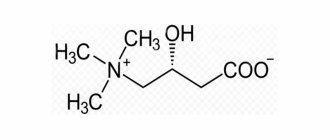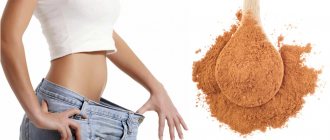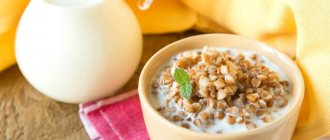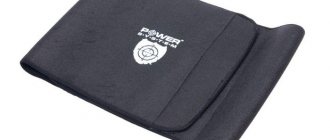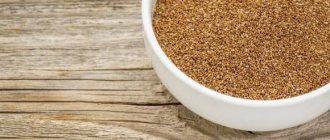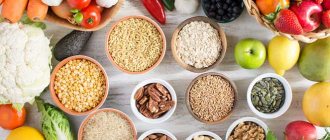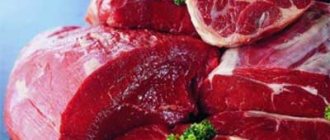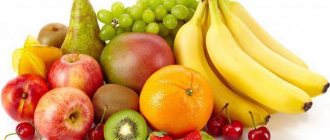What is dietary fiber?
Fiber is the so-called complex carbohydrates (polysaccharides), slowly digestible components that are mainly contained in plant foods:
- mushrooms;
- vegetables;
- corn;
- legumes.
If you need to increase your fiber intake in your daily diet, you should replace processed grains and processed foods with foods higher in fiber, such as:
- brown bread;
- wholemeal paste;
- unpolished rice;
- breakfast cereal.
You should also eat as many fiber-rich vegetables as possible, such as:
- artichokes;
- green pea;
- White cabbage;
- parsnip;
- spinach;
- Jerusalem artichoke.
As a snack, it is better to give preference to dried fruits. At least once a week you need to prepare dishes from legumes (lentil porridge, pea soup, stewed beans) or add them to salads and snacks.
Beans can also be combined with desserts, yogurts, breakfast cereals, baked goods, cereals and fruits. It is better to prepare a sauce, gravy, or appetizer from vegetables. When purchasing a particular product, it is worth studying the label on the package to determine its fiber content.
Fiber-rich legumes
Lentils
Fiber Content: 15 grams per ¼ cup of dried lentils
To ensure you're getting the fiber you're owed, add more of the humble lentil to your nutritional arsenal. Your muscles will appreciate an impressive 13 grams of plant-based protein per serving. There is another nice bonus - inexpensive lentils cook on low heat for about 30 minutes, which is much faster than dried beans. By the way, brown or green lentils contain more fiber than red (pink) lentils.
On a note
Cook lentils and add them to soups, sauces and salads. On a weekday, you can whip up a quick, fiber-rich lunch by tossing lentils with cherry tomatoes, diced bell peppers, spinach, feta cheese and dressing. You can also make vegetarian burgers with lentils on fasting days. Lentils also go well with red fish.
Common beans
Fiber content: 14 grams in 1 cup canned beans
Bodybuilders outright neglect beans in favor of meat, but consider beans and other legumes: cheap, convenient foods, loaded with fiber and other essential nutrients, and versatile in the kitchen. A study published in the Journal of the American College of Dietetics found that people who regularly eat beans are 23% less likely to have waist problems compared to those who don't eat beans.
On a note
Beans are ideal for upping the fiber in your next batch of chili. It can also be used with other legumes, chopped vegetables and dressings to create salads with excellent nutritional profile.
Split peas
Fiber Content: 13 grams per ¼ cup of dry peas
Split peas are not a regular feature on our shopping list, but they should be if you want to eat roughage. Along with fiber, you'll get a rich harvest of plant proteins and folic acid, a B vitamin that helps fight hypertension. Like lentils, yellow and green split peas cook faster than beans and don't require pre-soaking.
On a note
The best way to include split peas in your diet is in soups and stews or fish dishes. Meatloaf and pea soup are classic dishes that are packed with the protein your muscles love. Also try making hummus using cooked yellow split peas. Simply puree the peas and tahini (sesame paste), add garlic, lemon juice, smoked paprika and salt.
Chickpeas
Fiber content: 11 grams in 1 cup canned chickpeas
Also known as chickpeas, chickpeas have a light, nutty flavor and a nutritional profile that puts many other foods to shame. In it you will find praiseworthy amounts of fiber, vegetable protein, iron and vitamin B6, so necessary for the health of the nervous system.
On a note
Feel free to toss a handful of canned chickpeas into your salad or make homemade hummus. For a delicious, crunchy, fiber-rich snack, dry canned chickpeas with a paper towel and remove any loose skins. Place in a bowl and drizzle with 1 tablespoon vegetable oil. Add 1 teaspoon cumin, ½ teaspoon dried thyme and ¼ teaspoon salt, then sprinkle the aromatic spice mixture over the chickpeas.
Spread the chickpeas evenly on a baking sheet and bake at 200°C until crispy and golden brown, about 40 minutes. Stir a couple of times to ensure even baking. Let the dish cool to room temperature (the chickpeas will become even crispier). Store in an airtight container for up to three days.
Black beans
Fiber content: 8.5 grams per ½ cup canned beans
Beans, beans, are good for your heart, the more you eat, the more... Well, you know how that school rhyme ends. However, black beans are another “musical fruit” to lean on—if not for their high fiber content, then for the same anthocyanins (antioxidants) found in dark berries like blueberries. When purchasing canned beans, choose brands that package them in BPA (bisphenol)-free cans. Bisphenol is a dangerous chemical responsible for fat deposits and coronary artery problems.
On a note
Soups, chili, tacos and salads are the easiest ways to increase your intake of these black treats. Try making chili with black beans and then topping your baked potatoes with it. Surprise—you can even hide black beans in a chocolate brownie. Simply pour a can of black beans and their juice into a blender or food processor and puree. Then add the resulting puree to the brownie batter, thereby replacing about 75% of the fat in the recipe.
Edamame, frozen and peeled
Fiber content: 8 grams per ½ cup of beans
Edamame is a green bean, picked unripe, with a delicious nutty flavor and crunchy texture. You can find them in the frozen food section of the supermarket. This is much more natural soy than most packaged foods. A modest half-cup will give you 8 grams of premium plant-based protein and help you feel good about your muscles. If you want to avoid genetically modified soy, choose organic edamame.
On a note
When you need a salty snack to go with your drinks, try making the edamame recipe on the package, then sprinkling with fresh lemon juice and seasoning with smoked salt. You can also substitute edamame for chickpeas when making hummus.
Refried beans
Fiber content: 7 grams per ½ cup of beans
Refried pinto beans are the secret way to add fiber to your diet. Like other legumes, pinto beans are a good source of fiber. The men in white coats at Wake Forest University School of Medicine in North Carolina have discovered that consuming large amounts of soluble fiber is a very effective method of combating visceral fat. This type of adipose tissue is localized in the abdominal cavity; it is not only invisible, but also very dangerous from the point of view of the development of serious diseases. By the way, avoid refried beans with added fat.
On a note
Try using refried beans as a base spread for sandwiches or as a substitute for tomato paste on pizza.
Lima beans, frozen
Fiber Content: 5 grams per ½ cup of cooked lima beans
Rich and buttery, lima beans are named after the capital city of their homeland, Peru. During the summer months, you can find it fresh at farmers markets. At other times of the year, frozen lima beans are a convenient way to boost your fiber intake. The childhood favorite (just kidding!) is also an excellent source of iron and blood pressure-lowering potassium and magnesium.
On a note
To make quick succotash, sauté ½ cup chopped red bell pepper, ½ diced onion, and 2 minced garlic cloves in a skillet over medium heat for 2 minutes. Add 1 cup cooked lima beans, 1 cup corn kernels, and 2 tablespoons white wine or vegetable broth to the pan. Remove from heat, stir in 2 tablespoons chopped fresh parsley, add salt and pepper to taste.
Forms of fiber
In total, 2 types of fibrous substances can be distinguished depending on their interaction with water.
Insoluble
Insoluble dietary fiber does not grow in volume when passing through the gastrointestinal tract, as it absorbs a minimum of moisture. By doing this, they activate the activity of the digestive system, thus stimulating the transit of toxins, waste and undigested food residues.
Insoluble fiber polysaccharides are found in large quantities in hard-skinned vegetables and fruits, as well as bran and whole grains. It has a more solid microstructure, almost does not transform during movement through the intestines, but can significantly increase the volume of processed mass.
Soluble
When soluble fiber enters the body, it begins to absorb liquid, then increases in volume and becomes a viscous and thick mass. A clearly similar process can be observed during the preparation of oatmeal.
By swelling, soluble fiber fills the stomach and causes a feeling of fullness.
Most of them are found in the following products:
- apples;
- carrots;
- potatoes;
- oranges;
- beans;
- oatmeal;
- barley;
- chia seeds.
Both groups of fibers significantly add bulk to the food you eat without increasing its calorie content. This is due to the fact that food enzymes are not able to break down fiber; this process is carried out by bacteria inhabiting the human intestines, and it is called fermentation.
The resulting products are absorbed by our body. These are mainly fatty acids, as well as butyric, formic and acetic acid. It is very difficult to determine the exact volume of residual products. Dietitians unanimously claim that the calorie content of 1 g of fiber is about 2 kcal.
Dietary fiber, greatly increased in volume, has a mechanical effect on the digestive system, thanks to which a person feels full. Lack of fluid while eating foods high in dietary fiber can cause constipation.
What is fiber
Natural fiber is a coarse fiber of plant origin.
It is found in many products. The pulp that remains after making juices is fiber. There are two types of fibers: soluble and insoluble. Each food product has an individual ratio of the listed types of fibers. Some contain more insoluble fiber, while others contain more soluble fiber. The role of insoluble cellulose is to systematically cleanse the intestines. Soluble fibers absorb carcinogens, cholesterol, heavy metals and other harmful substances that stimulate the development of cancer cells in the human body . Food that does not contain coarse fiber lingers longer in the body, which can provoke fermentation in the stomach, which in turn creates a favorable environment for the proliferation of pathogenic bacteria.
Foods rich in soluble fiber for weight loss:
- apples;
- cabbage;
- citrus;
- wholemeal flour;
- berries;
- seeds.
Foods rich in insoluble dietary fiber:
- legumes;
- grain crops;
- peel of vegetables and fruits.
Types of fiber
In addition to water, fiber can interact with alkalis. Considering this factor and the amount contained in parts of plant foods, it is customary to distinguish 5 types of dietary fiber.
Cellulose
This substance is the main constituent of plant cell walls. Cellulose belongs to the group of insoluble types of polysaccharides.
It is a component in the following products:
- wholemeal wheat flour;
- bran;
- Brussels sprouts, white cabbage;
- beets;
- broccoli;
- radishes;
- young pea pods;
- tomatoes;
- peel of apples, sweet peppers, cucumbers.
Cellulose absorbs excess fluid, thereby activating the work of the colon. The daily intake of this substance is 19-38 g, depending on the age and gender of the person.
Hemicellulose
This type of complex carbohydrates predominates in the following foods:
- sprouted wheat;
- lentils;
- bran;
- apples;
- grain;
- mustard sprouts;
- corn;
- Brussels sprouts.
Almost all types of such polysaccharides can be dissolved. Hemicellulose absorbs liquid, thereby facilitating intestinal function.
Both types of this substance help quickly cleanse the gastrointestinal tract of processed food residues and prevent the following diseases:
- constipation – stool becomes more frequent;
- colitis – inflammation is relieved;
- spasms in both parts of the intestine;
- haemorrhoids;
- colon cancer.
The human body needs to consume 5-25 g of hemicellulose per day.
Lignin
This is another type of insoluble dietary fiber, which is found in significant concentrations in the following products:
- cereals;
- beans;
- eggplants;
- radishes;
- strawberries
Moreover, stale fruits and vegetables contain more lignin than freshly picked ones. The distinctive quality of this type of fiber is its special viscosity, which prevents the absorption of harmful substances and promotes the rapid removal of food debris from the intestines.
Moreover, due to the property of lignin to interact with the acids of the gallbladder, the level of cholesterol in the blood decreases. The body's daily requirement for the element is 5-6 g.
Comedy
This is a soluble type of polysaccharide that is part of tree sap. Since gum is a polymer of dietary fiber, it is found not only in the peel, but also in the pulp of vegetables and fruits.
Most gums are presented in the following products:
- oatmeal and other dishes made from oats;
- walnuts;
- dried beans;
- zucchini and pumpkin;
- potatoes;
- strawberries;
- barley;
- carrots.
Gums suppress appetite, lower cholesterol, are a source of vitamins and slow down the absorption of glucose, which is especially useful for patients with diabetes.
Pectin
Pectin is found in abundance in the following foods:
- citrus fruits;
- apples;
- carrots;
- green beans;
- cabbage;
- potatoes.
The element participates in the digestive process not only directly in the stomach, but also in the large intestine.
Cellulose. Products containing fiber
The composition of any food product that is of organic origin includes so-called hollow fiber. Intertwined with each other, these fibers form compounds without which the human body could not exist and function at the proper level. Fiber is a plexus of such hollow fibers; in the medical literature it is also known as cellulose and granulosa.
It should be noted that the body requires a fairly long period of time to absorb fiber as such, since fiber is the rough part of plants that is not digested by the body. However, despite this fact, this “slow-acting” carbohydrate is extremely important for ensuring the normal digestion process. That is why it is so important to eat foods containing fiber - once it enters the body, it passes through all its systems in transit and, thus, simultaneously collects and removes all food debris, poisons, toxins, and excess fat. In other words, fiber of plant origin is the orderly of the gastrointestinal tract and, I must say, it copes well with the functions assigned to it.
It's no secret that the products that enter us have a direct impact on our health, our well-being and, naturally, our appearance. Together with them, these products bring vitamins, minerals and other useful substances that will undergo splitting, transformation and absorption by plasma. The situation is completely different when fiber enters the body. This element does not undergo either the stage of decomposition into useful components, or the stage of digestion by the stomach; in fact, it leaves our body in the form in which it entered it, however, it plays a primary role in maintaining order and balance in the body.
Fiber performs a number of very important functions, namely:
- Normalization of metabolism and restoration of the gastrointestinal tract;
- Products containing fiber initiate the process of rapid, but completely safe weight loss. Having eaten even a small portion of such foods, we feel full, and the hated extra pounds begin to evaporate;
- Normalization and reduction of blood sugar concentration;
- Peristalsis is activated and stimulated (the process of contraction of organs in order to move their contents to the exit);
- The lymphatic system is actively cleansed;
- Toxins, waste, intestinal and gastric mucus, excess fats come out;
- Cholesterol is reduced, and this is an excellent prevention of cardiovascular diseases;
- Active strengthening of muscle fibers occurs;
- According to some scientists, the risk of developing cancer is reduced.
Today, in pharmacies you can purchase a huge number of dietary supplements rich in fiber, however, it is still better to give preference to natural products and fiber of plant origin.
Beneficial properties of dietary fiber
Fiber is necessary for the body because it performs the following functions:
- promotes accelerated removal of food from the digestive tract. The longer fiber is digested by the gastrointestinal tract, the more difficult it is to eliminate it later. Usually this process is accompanied by bloating, flatulence and gas formation. Fiber stimulates such reactions in the body and promotes its natural cleansing. That is why people suffering from intestinal problems are recommended to introduce more fiber products into their diet;
- dietary fiber in combination with plenty of drinking normalizes intestinal motility, and the more fiber a person consumes, the more water he needs to drink daily;
- dietary fiber prevents the intestines from slowing down, which causes constipation, and inhibits its accelerated work, as a result of which a person suffers from diarrhea. This double effect is due to increased intestinal motility, the muscles of which actively contract, and also due to the flow of fluid, which increases the volume of stool;
- fiber slows down the digestion of food, controls appetite and the feeling of fullness;
- dietary fiber creates the basis for favorable intestinal microflora, so nutritionists note that fiber is involved in the prevention of many diseases, including the following:
- cardiovascular pathologies;
- diabetes;
- cancer;
- obesity;
- consuming fiber reduces the likelihood of developing infectious and inflammatory processes, since it has a beneficial effect on the functioning of the immune system.
Recent nutritional research has highlighted the benefits of polysaccharides for humans, both in normalizing digestion by increasing the rate of waste elimination and in releasing waste and toxins.
This explains why many people adjust their diet and switch to “roughage”, which helps to get rid of excess weight and normalize the process of processing food by the body.
In addition to its adsorbing effect, fiber also has the following beneficial properties:
- gives a feeling of satiety, which is especially valuable when dieting;
- normalizes appetite;
- improves the secretory function of the stomach;
- reduces the risk of malignant tumors of the colon;
- saturates the body with vitamins, minerals and microelements;
- slows down the increase in blood glucose levels;
- reduces cholesterol levels;
- normalizes blood pressure.
Functions of fiber
Fiber performs a huge list of important functions, the main one of which is facilitating the passage of food through the gastrointestinal tract. Due to its composition, when it enters the intestines along with food, it forms a food lump. It easily passes to the “exit”, so heavy foods do not stay long in the digestive tract. It is due to the consumption of a sufficient amount of fiber that the human body works smoothly, without failures or difficulties. With a lack of plant fibers, the gastrointestinal tract begins to function like an avalanche, which is why undesirable symptoms appear over time.
In addition to the sorbing function, fiber is also responsible for:
- improvement of stomach function;
- the appearance of a quick feeling of satiety while eating;
- reducing the risk of developing colon cancer;
- decreased appetite;
- intestinal motility;
- nutrition of beneficial intestinal microflora;
- intake of a sufficient amount of minerals, vitamins and microelements into the body;
- reducing blood sugar and cholesterol levels.
Another beneficial property of fiber is that it prevents the rapid absorption of fats in the small intestine, which is why sugar enters the blood slowly, and not at lightning speed. This, in turn, does not increase insulin production, which is especially important for diabetics.
Why is a lack of complex proteins dangerous?
A lack of polysaccharides in the daily diet can lead to disturbances in intestinal motility, which is the main cause of constipation. A prolonged lack of fiber in the diet increases the risk of developing quite serious diseases, such as type 2 diabetes and heart disease.
Even in the presence of chronic digestive problems, for example, irritable bowel syndrome, it is recommended to continue consuming foods high in dietary fiber, with the only difference being that the patient’s individual intolerance to certain substances is taken into account.
Excessive consumption of polysaccharides does not lead to serious health consequences. However, too much of them in the body can cause unpleasant symptoms such as diarrhea and flatulence. It is worth noting that such cases are quite rare.
The effectiveness of fiber in losing weight
A huge number of people suffer from excess weight problems. But there are effective ways to correct your figure. You can try a lot of new-fangled diets, but simple fiber, when consumed correctly, helps you lose excess weight naturally. This is a natural remedy, the effectiveness of which has long been tested by time.
The structure of fiber promotes the absorption and elimination of substances unnecessary for the body. Even a small amount of fiber, swelling in the stomach, turns into a kind of gel-like mass, which gives a feeling of fullness and creates soft conditions for digestive activity. This applies to soluble fiber. Insoluble fiber passes through the gastrointestinal tract unchanged and has a moderate laxative effect. Thanks to this, weight stabilization occurs.
Fiber, among other things, when it enters the stomach, increases significantly in volume, and a person begins to feel full. And this feeling does not leave a person for quite a long time. You eat less, feel full quickly and lose weight. Don't expect instant results from fiber. The body will gradually get used to the new diet and adapt to it. But the result will definitely be good, since you will not only be able to lose weight, but also cleanse your body of harmful substances accumulated in it. This type of eating behavior guarantees longevity and health; it is recommended by many leading nutritionists.
Fiber requirement standards. Table by age
The daily fiber requirement is approximately 25-30 g, but most people have no more than 15 g of this substance in their diet.
For normal intestinal functioning, EFSA (European Food Safety Authority) recommends following the following consumption standards:
| Age | Floor | Daily requirement | |
| 1-3 years | boys and girls | up to 14 g | |
| 4-7 years | 17-19.5 g | ||
| 8-12 years | 22-25 g | ||
| 13-18 years old | boys and girls | 25-31 g | |
| 19-30 years old | 22-35 g | ||
| 30-50 years | men | 40 g | with a non-standard diet 14 g per 1,000 kcal |
| women | 25 g | ||
| over 50 years old | men | 30 g | |
| women | 21 g | ||
To prevent organ pathologies, as well as type 2 diabetes, it is necessary to include in the daily menu more dishes and foods rich in fiber - the volume of its consumption should be at least 30 g every day. Experts give a similar recommendation to people with cancer and obesity.
Fiber-rich vegetables
Pumpkin acorn
Fiber content: 9 grams in 1 cup cooked pumpkin
Pumpkin is a winter fiber powerhouse. The sweet pulp contains unprecedented amounts of beta-carotene, an antioxidant that is converted into vitamin A in the body and strengthens the immune system.
On a note
Roasted acorn squash can be paired with any salad topping, including chili, quinoa or millet. Creamy acorn squash soup is a great way to snack, or roast squash wedges and then drizzle them with natural maple syrup.
Artichoke
Fiber content: 7 grams per medium artichoke
When was the last time you cooked artichokes? That's what we thought. Meanwhile, artichokes have more fiber than anywhere else and are also full of vitamins C, K and folic acid. In a word, it’s time to fall in love with this wonderful vegetable, just don’t buy store-bought artichoke dip, it’s a calorie bomb.
On a note
Search online for artichoke recipes and try adding it to mac and cheese, vegetable salads, pizza, or grilled cheese. Or make homemade artichoke dip using healthy ingredients like Greek yogurt.
Parsnip
Fiber Content: 7 grams per cup
This little-known version of Bugs Bunny's favorite vegetable has a deliciously nutty, slightly sweet flavor with subtle herbal notes. Interestingly, the root vegetable contains 60% more plant fiber than carrots, and as a supplement you will receive a solid portion of potassium for normal muscle function.
On a note
Unlike carrots, parsnips almost always become tastier after heat treatment. Try roasting it, or adding large chunks to soups and stews. You can also mix boiled parsnips with potatoes to make delicious mashed potatoes!
Broccoli raab (rapini)
Fiber content: 6 grams per half bunch of cooked broccoli raab
Broccoli raab is often used in Italian and Chinese dishes. This vegetable has small broccoli-style florets, long stems and green leaves. The taste is also similar to broccoli, but a little sharper. In addition to pectin, one of the main advantages of raab is the abundance of various phytochemical compounds (indoles, sulforaphane), which prevent the development of diseases. You can find rapini in the vegetable departments of supermarkets.
On a note
The flower head, leaves and stems can be cooked (blanched, sautéed, boiled, steamed) and eaten like regular broccoli.
Sweet potato
Fiber Content: 4 grams in 1 small sweet potato
With a glycemic index lower than regular potatoes, sweet potatoes are an optimal source of carbohydrates for those who are concerned about their figure. We vote for this choice with both hands also because it brings significant amounts of fiber to the menu, which can fight fat. Just make sure to leave the skin in place, as it contains half of the sweet potato's fiber.
On a note
Roasted, sauteed or mashed, it's hard to go wrong with sweet potatoes. You'll be surprised, but the sweetish taste makes sweet potatoes a good addition to protein shakes. You can even add mashed sweet potatoes to your waffle or pancake batter.
Green peas, frozen
Fiber Content: 4 grams per ½ cup
Few frozen vegetables give you as much crude fiber as green peas. Freezer peas are refrigerated immediately after harvest, which helps preserve nutrients including vitamins K, A, and C. And as a bonus, you'll get 4 grams of protein with each serving.
On a note
Try green peas in soups, potato salads and pasta dishes. Or simmer 2 cups frozen peas in 1 cup water until tender, then stir in the juice of half a lemon, ½ cup chopped parsley and a few pinches of salt. You'll make a great fish sauce!
Sun-dried tomatoes
Fiber Content: 3.5 grams per ½ cup
When the summer season is over, the taste of supermarket tomatoes leaves much to be desired. Check out these super-flavorful sun-dried tomatoes, which contain more pectin than you might imagine. They are also a good source of lycopene, a powerful antioxidant that lowers blood pressure. If you want to cut down on salt, choose buttered tomatoes from the many options in the deli section.
On a note
Add chopped sun-dried tomatoes to scrambled eggs, minced meatballs, pasta dishes and vegetable salads. Or try a new sandwich jam: Place 2/3 cup sun-dried tomatoes, ¼ cup olive oil, 3 tablespoons water, 2 tablespoons grated horseradish, 2 tablespoons red wine vinegar, and ¼ teaspoon black pepper in a blender or food processor. Grind it all into a thick mass with small pieces.
Brussels sprouts
Fiber Content: 3 grams per cup
Few foods are as nutrient-dense as the unfairly forgotten Brussels sprouts. Not only is it rich in pectin, it's also an excellent source of vitamins K and C. New experiments show that taking vitamin C can lower your heart rate and feelings of fatigue during exercise, making even grueling workouts feel less difficult.
On a note
The best way to cook Brussels sprouts is to roast them, which helps transform the slightly earthy flavor into a much more satisfying sweetness. Cut the Brussels sprouts in half, sprinkle with salt and oil and roast at 200°C until they are tender with a slight dark crust. You can also shred Brussels sprouts in a food processor and add them to your coleslaw.
Restrictions
You can avoid the negative consequences of excess fiber entering the body if you consume it in moderation and not on an empty stomach. The best option is to combine foods with dietary fiber and some liquids.
For example, if beans are consumed at one meal, then at the same time you should eat soup or drink compote, water, or tea as the first course. Including foods rich in dietary fiber in your menu helps improve digestion.
Their excess leads to diarrhea, rotting, poor digestion and fermentation of food, constipation, which causes the following symptoms:
- bloating;
- intestinal obstruction;
- spasmodic pain in the lower abdominal cavity;
- hypoglycemia in patients with diabetes mellitus.
If the listed symptoms appear, you should consult a physician or gastroenterologist about the advisability of continuing to consume fiber.
With caution, you should include fibrous foods in your daily menu in large quantities in case of diseases of the stomach or duodenum during exacerbation of diseases.
Harmful fiber contraindications
When consuming fiber, you must drink enough water, otherwise dehydration will occur. And such a condition is fraught with dire consequences for the human body. For the same reason, due to a lack of fluid in the body, constipation may occur.
If you get too carried away with eating fiber, you can deprive your body of a large amount of nutrients and minerals. Excess fiber can also cause bloating and flatulence.
Despite the fact that fiber stabilizes the digestive process, an excess of it increases the risk of diarrhea. This is due to the fact that plant fibers begin to practically push food out of the body until the digestive process is completed. Hence the conclusion is that after such a meal the body will not receive all the nutrients it needs from food.
List of the best foods rich in fiber. Benefits and contraindications
In order not to harm your body, you need to know about the volume of this element in each product consumed.
Cereals and pasta
Dietary fiber in food products (the table includes background information on their content) in pasta and cereals is contained in different concentrations:
| Finished product | Volume of fiber per 100 g of raw materials | Part of the daily value for an adult (30 g) |
| barley | 14.5 g | 48 % |
| buckwheat | 14 g | 47 % |
| buckwheat | 11.4 g | 38 % |
| rice | 9.7 g | 32 % |
| oatmeal | 8 g | 27 % |
| pearl barley | 7.8 g | 26 % |
| corn noodles | 4.8 g | 14 % |
| whole wheat noodles | 4.8 g | 14 % |
| corn grits | 4.8 g | 16 % |
| wheat cereal | 4.6 g | 15 % |
| semolina | 3.6 g | 21 % |
| pasta | 1.8 g | 5,4 % |
| egg noodles | 1.2 g | 3,6 % |
| rice noodles | 1 g | 3 % |
Cereals and pasta are beneficial for the body due to the following effects:
- prolonged feeling of fullness;
- the protein contained in the composition stimulates cell growth and regeneration;
- contains antioxidants;
- help cleanse the gastrointestinal tract.
Contraindications for use - excess starch content can lead to weight gain.
Legumes
Legumes also contain fiber. Its volume is indicated in the table:
| Finished product | Volume of fiber per 100 g of raw materials | Part of the daily value for an adult (30 g) |
| beans | 12.4 g | 41 % |
| lentils | 11.5 g | 38 % |
| mung bean | 11.1 g | 37 % |
| peas | 10.7 g | 36 % |
| chickpeas | 9.9 g | 33 % |
| soya beans | 6 g | 18 % |
Positive aspects of eating legumes:
- high protein content;
- can be given to children from 8-9 months of age;
- legumes cleanse the body of cholesterol;
- due to the presence of nutrients in the composition, they are recommended for use during pregnancy;
- these products improve heart function and stabilize hormonal levels;
- the condition of the skin, hair, nails improves;
- legumes actively remove radionuclides and heavy metal salts from cells.
The possible harm that beans can cause to the body is expressed in the aggravation of pathologies such as:
- hepatitis;
- thrombophlebitis;
- tendency to constipation and gas formation in the intestines;
- gout;
- gastrointestinal diseases;
- circulatory failure.
Vegetables
Dietary fiber in food (the table contains data on vegetables) helps the body cleanse itself, so it is important to include it in the diet in the required quantity:
| Finished product | Volume of fiber per 100 g of raw materials | Part of the daily value for an adult (approximately 30 g) |
| Jerusalem artichoke | 4.5 g | 15 % |
| cabbage | 2-4 g | 7-14 % |
| beet | 2.5 g | 8 % |
| carrot | 2.4 g | 8 % |
| radish | 2.1 g | 7 % |
| pumpkin | 2 g | 7 % |
| Sweet pepper | 1.9 g | 6 % |
| turnip | 1.9 g | 6 % |
| radish | 1.6 g | 5 % |
| garlic | 1.5 g | 5 % |
| potato | 1.4 g | 5 % |
| tomato | 1.4 g | 5 % |
| zucchini | 1 g | 3 % |
| cucumber | 1 g | 3 % |
Including vegetables in the daily menu benefits the body, which is reflected in the following effects:
- the composition contains trace elements and acids that have a positive effect on the functioning of the cardiovascular system;
- vegetables are quickly digested, giving a person strength and vigor for the whole day;
- vegetables contain many vitamins that stimulate the nervous system;
- products free the body from toxins, carcinogens and toxins.
Vegetables can harm human health only in the case of individual characteristics of the body and chronic diseases. For example, white cabbage is not recommended for consumption if a person has increased gastric secretion or is diagnosed with pancreatitis.
Animal products
Animal products do not contain fiber, as it is an element of plant foods.
Berries and fruits
Dietary fiber in foods (the table contains a list of berries and fruits rich in fiber) is necessary for the body to function normally. When compiling a diet, you should take into account the concentration of fiber contained in foods:
| Finished product | Volume of fiber per 100 g of raw materials | Part of the daily value for an adult (approximately 30 g) |
| dried figs | 18.2 g | 61 % |
| dried apricots | 17.6 g | 59 % |
| dried peach | 14.9 g | 50 % |
| dried apples | 14.9 g | 50 % |
| rose hip | 10.8 g | 36 % |
| raisin | 9.6 g | 32 % |
| prunes | 9 g | 30 % |
| avocado | 6.7 g | 22 % |
| feijoa | 6.4 g | 21 % |
| cloudberry | 6.3 g | 21 % |
| dried pear | 6 g | 20 % |
| dates | 6 g | 20% |
| red rowan | 5.4 g | 18 % |
| black currant | 4.8 g | 16 % |
| chokeberry | 4.1 g | 14 % |
| durian | 3.8 g | 13 % |
| kiwi | 3.8 g | 13 % |
| raspberries | 3,7 | 12 % |
| quince | 3.6 g | 12 % |
| white currant | 3.4 g | 11 % |
| Red currants | 3.4 g | 11 % |
| cranberry | 3.3 g | 11 % |
| blueberry | 3.1 g | 10 % |
| blackberry | 2.9 g | 10 % |
| pear | 2.8 g | 9 % |
| cowberry | 2.5 g | 8 % |
| blueberry | 2.5 g | 8 % |
| fresh figs | 2.5 g | 8 % |
| orange | 2.2 g | 7 % |
| strawberries | 2.2 g | 7 % |
| apricot | 2.1 g | 7 % |
| peach | 2.1 g | 7 % |
| lemon | 2 g | 7% |
| sea buckthorn | 2 g | 7 % |
| mandarin | 1.9 g | 6 % |
| cherry plum | 1.8 g | 6 % |
| cherry | 1.8 g | 6 % |
| grapefruit | 1.8 g | 6 % |
| apples | 1.8 g | 6 % |
| banana | 1.7 g | 6 % |
| nectarine | 1.7 g | 6 % |
| papaya | 1.7 g | 6 % |
| grape | 1.6 g | 5 % |
| mango | 1,6 | 5 % |
| persimmon | 1.6 g | 5 % |
| plum | 1.5 g | 5 % |
| a pineapple | 1.2 g | 4 % |
| cherries | 1.1 g | 4 % |
| pomelo | 1 g | 3 % |
| pomegranate | 0.9 g | 3 % |
| melon | 0.9 g | 3 % |
| watermelon | 0.4 g | 1 % |
Berries and fruits bring great benefits to the human body, this is expressed by their effects:
- participate in cleansing the intestines;
- with increased consumption, berries and fruits do not harm the figure;
- these products stimulate cell regeneration and prevent moisture evaporation;
- pectin normalizes sugar levels and removes carcinogens;
- fruits and berries contain vitamins and microelements.
- If these products are consumed unbalanced, they can harm the body:
- cause an allergic reaction;
- Peaches and apricots take a long time to digest and can cause a feeling of heaviness;
- consuming large amounts of sweet varieties can lead to the development of varicose veins;
- exotic fruits, plums and grapes relax the intestinal muscles and can cause diarrhea.
Let's see how much fiber is found in different types of foods
| Fruits, berries and dried fruits rich in fiber: | ||||||||||
| Raspberries | 5,1 | Black currant | 3,0 | Gooseberry | 2,0 | A pineapple | 1,2 | |||
| Strawberries | 4,0 | Dried apricots | 3,2 | Quince | 1,9 | Avakado | 1,2 | |||
| Dates | 3,5 | Figs (fresh) | 3,0 | Olives | 1,5 | Peaches | 0,9 | |||
| Banana | 3,4 | Red Ribes | 2,5 | Orange | 1,4 | Apricots | 0,8 | |||
| Raisin | 3,1 | Cranberry | 2,0 | Lemon | 1,3 | Grape | 0,6 | |||
| Vegetables, roots and greens rich in fiber: | ||||||||||
| Corn | 5,9 | Rhubarb (stalks) | 1,8 | Pumpkin | 1,2 | Sorrel | 1,0 | |||
| Dill | 3,5 | Radish | 1,5 | Carrot | 1,2 | Cauliflower | 0,9 | |||
| Horseradish | 2,8 | Sweet green pepper | 1,4 | White cabbage | 1,0 | Cucumbers (ground) | 0,7 | |||
| Parsley root | 2,4 | Sweet red pepper | 1,4 | Celery | 1,0 | Green onion | 0,9 | |||
| Parsnip | 2,4 | Turnip | 1,4 | Potato | 1,0 | Radish | 0,8 | |||
| Fiber-rich beans, nuts and seeds: | ||||||||||
| Peanut | 8 | Chestnut | 6,8 | Peas | 5,7 | Lentils | 3,7 | |||
| Brazilian nut | 6,8 | Sunflower seeds | 6,1 | Beans | 3,9 | Coconut | 3,4 | |||
| Fiber-rich breads, pasta and cereals: | ||||||||||
| Oat groats | 2,8 | Oat flakes “Hercules” | 1,3 | Pearl barley | 1,0 | Millet. bread flour 1 tsp. | 0,2 | |||
| Corn bread | 2,5 | Buckwheat porridge kernel | 1,1 | Rice porrige | 0,4 | Supreme pasta varieties | 0,1 | |||
| Corn grits | 1,8 | Rye bread | 1,1 | Wheat porridge | 0,7 | Wheat flour 1 tsp. | 0,2 | |||
| Barley grits | 1,4 | Peas | 1,1 | Semolina | 0,2 | Pasta 1 s. | 0,2 | |||
What fibrous foods are allowed during pregnancy?
Dietary fiber in food consumed daily brings undeniable benefits to the body. This is especially important for women carrying a child. It is important for them to compose their menu in accordance with the tables of fiber content in products so that it is as balanced as possible.
The daily diet of pregnant women must include fresh fruits and vegetables.
They help normalize stool and regular bowel movements, and also help maintain stable blood glucose levels. They are recommended to eat up to 2 kg of vegetables and fruits daily. At the same time, apples, pears, apricots and peaches should be consumed with the peel, since it contains the most dietary fiber.
The main sources of fiber for pregnant women are whole grain products. Rice, rye and wheat bran are high in dietary fiber. However, their excess in the body prevents the normal absorption of other nutrients obtained from their food.
In addition, nutritionists recommend adding peas and lentils to your diet. In addition to their high dietary fiber content, they are sources of iron, calcium, zinc, and phosphate.
It is especially useful to enrich the diet with foods rich in fiber for pregnant women in the last trimester. During this period, the fetus begins to put pressure on the organs of the digestive system, which causes problems with digestion of foods.
Are additional fiber sources needed?
The diet of many people, especially urban residents, contains very little fresh vegetables and fruits, as well as whole grains - the main sources of fiber. It includes meat and processed products such as white bread, rice, pasta, buns and sweets.
Read:
Why does the left or right eye twitch?
There is not enough plant food on the menu, and a small part of it is subjected to processing that reduces the fiber content - boiling, stewing, squeezing juice. In this case, the use of additional sources is justified.
Bran contains a lot of fiber. These are the remains of the grain shell, a by-product of flour milling. In 100 g of dry mixture there are up to 45 g. Bran is rich in B vitamins and minerals (potassium, magnesium, zinc, selenium, etc.). You can buy them at a pharmacy or supermarket. Wheat, rye and oatmeal are usually found on sale. The latter have finely granulated fibers and are more tender because they contain more soluble fiber. In addition, oat bran contains beta-glucan, a polysaccharide and natural prebiotic that strengthens the immune system.
It is important that the product is not subjected to any processing (steaming, granulation), because then it loses its beneficial properties. It is better to take bran without additives such as salt, sugar and others.
Products with dietary fiber and rules for reasonable weight loss
Regular consumption of foods high in fiber helps you lose extra pounds and maintain a healthy weight. A sufficient amount of dietary fiber can speed up metabolism at rest, that is, when a person burns some calories without engaging in sports or other physical activity.
Most foods high in fiber (fruits, vegetables, greens) are low in calories. Those who want to lose weight need to eat more of these foods to feel and look healthy. They quickly saturate the body, which helps eliminate excess weight and maintain excellent physical shape.
The rules for losing weight with dietary fiber dictate the following points:
- You need to consume 20 g of fiber daily. This volume is provided by 800 g of vegetables and fruits eaten with peel;
- pearl barley, buckwheat, oatmeal, as well as brown rice will provide up to 5-7 g of fiber in the diet;
- 100 g of whole grain bread contains up to 6 g of dietary fiber;
- 2 times a week it is necessary to introduce into the diet dishes prepared with the addition of lentils, beans or peas;
- Every day you need to consume up to 6 tbsp. l. steamed bran;
- confectionery sugar must be replaced with dried fruits;
- During snacking periods, you should eat nuts or seeds.
To lose weight, you need to eat fiber-rich foods in the morning. Also, nutritionists do not recommend drinking water with food.
The menu should be compiled according to the following principle:
- salads – 25% of the diet;
- fruits – 25% of the diet;
- fresh or cooked vegetables - 25% of the diet;
- cereals and legumes – 10% of the diet;
- nuts – 10% of the diet;
- vegetable fats – 5%.
Most products of plant origin contain dietary fiber, but the following are considered the best (in descending order of the amount of fiber they contain per 100 g of product):
- Wheat bran – 46.6 g.
- Chia seeds – 34.4 g.
- Flax seeds – 27.3 g.
- Dried porcini mushrooms – 26.2 g.
- Poppy seeds – 19.5 g.
- Buckwheat grain – 14.0 g.
- Beans – 12.4 g.
- Lentils – 11.5 g.
Dietary fiber is an essential part of a healthy human diet. When calculating the daily menu, it is advisable to use a table of the content of these substances in food products. In this case, it will be possible to say with confidence that the body will receive a sufficient amount of fiber for its normal functioning.
How to take fiber
Include greens, fruits, vegetables, and grains in your diet, which are consumed in their natural form, and not as puree or juice.
Dishes after mechanical and thermal processing are useful as an alternative - when natural products rich in fiber injure weakened mucous membranes and worsen the condition in the treatment of gastrointestinal diseases.
Replace cakes and buns with bran bread or wholemeal bread.
Eat fiber foods throughout the day, not just for breakfast.
Nutritionists recommend the following dosage regimen (in fractions of the daily diet):
- vegetable salads, greens – 1/4;
- fresh fruits – 1/4;
- root vegetables after heat treatment – 1/4.
The remaining 1/4 of the daily diet:
- Carbohydrates: cereals, bread, sugar – 1/10.
- Protein: nuts, milk, fermented milk products – 1/10.
- Fats: animal and vegetable fats – 1/20.
Include fiber in your diet gradually, reaching the recommended level within a month or two. Otherwise, the stool becomes bloated and the stool is disturbed.
A diet low in fat and high in fiber is beneficial for diabetes.
What kind of fiber is there?
What is fiber? In the 1970-80s, biologists were categorical - this is a ballast substance that is not digested in the body and settles in it as ballast.
But they soon came to their senses: fiber is the dietary fiber of plants and grains, which is contained in the stems, dense shell, cells, what kind of ballast it is! In the body they did not deceive! – are not digested, gastrointestinal enzymes do not take them. But they take beneficial microorganisms - intestinal microflora and its builders, probiotics. They feed on fiber, and this makes the body healthy, resilient, slim and beautiful.
Fiber is not just one super substance; there are many fibers. Vegetables and fruits, grains and legumes – you can find different “grades” of prebiotics in your usual food. Fiber has a lot of classifications, but we’ll leave it to chemists to understand the intricacies of its composition. We are only interested in one typology:
- Insoluble. These are cellulose and lignin. Such dietary fiber clumps into a hard ball, rolls throughout the body and cleans out all harmful substances. The body, trying to digest this mysterious mass, spends a lot of energy - the result is a healthy mini-diet!
- Soluble. These are pectins, gums, hemicelluloses. This kind of fiber is a real magician. When it enters the body, it quickly absorbs liquid, swells several times, and you immediately feel full. Hunger after such a meal comes later than usual, you eat less - this is another secret of a wonderful figure.
Tips for consuming fiber
- For good gastrointestinal function and weight loss, fiber is necessary. Therefore, regularly consume fruits, vegetables, nuts, dried fruits, seeds, legumes, whole grains, bran or wholemeal bread.
- If possible, reduce the amount of refined foods that lack fiber. Those. give preference to brown rice, bran bread, and cane sugar. Remember that dairy products and meat contain no dietary fiber at all.
- During heat treatment, the amount of dietary fiber in vegetables is halved in just 20 minutes of cooking. Try to consume vegetables fresh or cook them as sparingly as possible, adding them only at the end of cooking.
- The record holder for the content of plant fibers is bran. Add them to porridge, soup, kefir - this will reduce appetite and improve digestion. Before doing this, the bran can be soaked in warm water and waited for 20 minutes until it swells. If you add bran to soup, it can completely replace bread, and your lunch will be more nutritious and healthy. By the way, if you want to prepare a tasty and aromatic soup, then look here for many options for pickle.
- If your diet contains a lot of vegetables, fruits, and cereals, then you don’t need to consume bran. In all other cases, this product is indispensable.
- In some people, consumption of coarse fibers, even within normal limits, can cause flatulence. This is explained by the peculiarity of the intestinal microflora. In this case, consume fiber in small portions, gradually adapting your body to its consumption.
- You should not consume fiber in excess. Since it is a sorbent for cleansing the body, useful microelements and vitamins can also be excreted along with toxic substances. Dietary plant fibers are an essential substance for humans, but they should not be abused.
- Fiber absorbs a large amount of liquid, so be sure to accompany its intake with plenty of water (an additional 2-3 glasses of water per 20-30 grams of dietary fiber).
- If you feel that you are not consuming the right amount of dietary fiber through regular foods, you can buy special supplements. Fiber can be made in the form of powder, granules and even special bars. Moreover, both individual types (cellulose, hemicellulose, lignin, pectin, gums) and combined versions are sold.
- The approximate daily fiber intake is 35-45 g (at least 25 g). Read more about fiber content in foods below. If you decide to increase your intake of dietary fiber, you need to do this gradually. An example of a menu that shows the daily fiber intake:
Fiber content in products: tables
In order to understand how much dietary fiber you consume, we offer you tables with fiber content in foods:
High fiber foods:
Scientists have proven that adequate fiber intake significantly reduces the risk of many diseases.
That's why it's so important to eat fresh vegetables and fruits, legumes and grains, seeds and bran. Fiber is also effective for weight loss, because it reduces appetite and helps cleanse the body of toxins.
